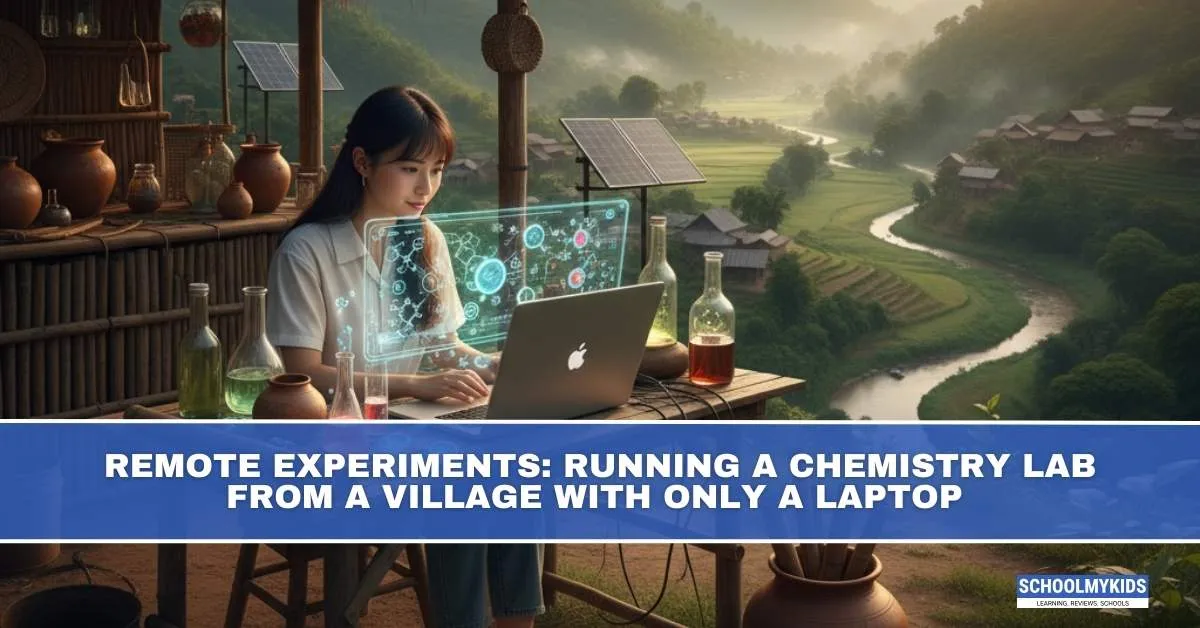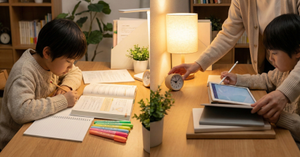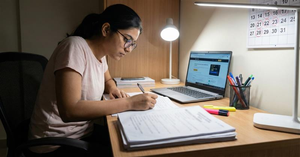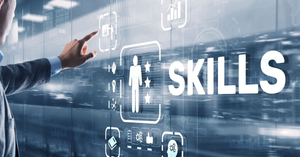Science has always had a reputation for being hands-on: bubbling flasks, glass beakers, Bunsen burners, and the occasional explosion that makes a classroom memorable. But what happens when students live far away from schools with fancy labs—say, in a rural village where a basic classroom is the best you get? Traditionally, that meant being cut off from practical science education. Today, however, technology is rewriting that story. With only a laptop and an internet connection, students in even the most remote corners of the world can run chemistry experiments, analyze results, and build a real understanding of scientific inquiry.
Why Remote Chemistry Labs Matter
- Access and Equity: Urban students often get better facilities than rural ones. Remote labs shrink this gap by giving every student the same digital tools.
- Safety: Experiments with dangerous acids, volatile gases, or open flames can be simulated without risk.
- Cost Efficiency: Building and maintaining a traditional chemistry lab requires a huge investment. A laptop-based setup is drastically cheaper.
- Scalability: One digital lab can serve thousands of students at once, without the limitations of physical lab space.
How a “Laptop Chemistry Lab” Works
A remote chemistry lab isn’t just about watching videos of someone else mixing chemicals. The idea is to make students active participants. There are several models:
- Virtual Simulations: Platforms like PhET Interactive Simulations (University of Colorado Boulder) or Labster create 3D environments where students click, drag, and control lab equipment virtually. They can adjust temperature, mix solutions, measure pH, and even run molecular modeling.
- Remote-Controlled Labs: Some universities set up real physical labs with internet-connected equipment. Students log in from their laptops, run an experiment (e.g., titration, spectroscopy), and see live data streamed back. It’s like having robot arms do the work on their behalf.
- DIY Low-Cost Experiment Kits + Laptop Guidance: Students may receive small kits (safe, non-toxic substances like vinegar, baking soda, citric acid, simple indicators). The laptop then provides instructions, animations, and analysis software to help them treat these simple reactions like “mini-versions” of formal experiments.
Examples of Remote Chemistry Experiments
- Reaction Rates Simulation: Students change concentration and temperature digitally to see how fast a reaction proceeds.
- Acid-Base Titration (Virtual Burette): Students operate a virtual burette and watch the color change at the equivalence point.
- Molecular Orbital Models: 3D visualization lets students rotate and manipulate molecules impossible to see with the naked eye.
- Gas Laws: A digital piston lets them vary pressure, volume, and temperature, visualizing Boyle’s and Charles’s laws.
- Spectroscopy Experiments: Using remote-controlled spectrometers, students collect actual data and interpret peaks.
Benefits for Rural Students
- Overcomes Geographic Barriers: No need to be in a city with a big science lab.
- Promotes Digital Literacy: Students get comfortable with technology while studying science.
- Prepares for University: Many higher-education labs now include simulations, so students won’t feel left behind.
- Encourages Curiosity: With no fear of accidents, students can “experiment” more boldly.
Challenges and Limitations
- Internet Connectivity: A slow rural connection can make simulations frustrating. Offline versions of software (like PhET) are crucial.
- Lack of Physical Sensation: Students don’t experience the smell, touch, or careful dexterity required in a real lab.
- Teacher Training: Instructors need to be trained in digital pedagogy, not just textbook chemistry.
- Initial Costs: Even a laptop might be a hurdle in some villages, though shared community devices can help.
Making It Work in Villages
- Offline Simulations: Distribute USB drives or pre-loaded software for areas with poor internet.
- Community Learning Hubs: One laptop in a school or community center can serve groups of students.
- Government/NGO Partnerships: Education initiatives can sponsor laptops and digital resources.
- Blended Approach: Pair virtual labs with simple, safe household experiments so students don’t lose the tactile side of science.
The Bigger Picture
Remote chemistry labs are not just a “stopgap” for poor schools. They represent a new way of thinking about science education globally. Even in developed countries, universities increasingly rely on simulations for efficiency, safety, and scale. What began as a necessity in rural villages might end up as the norm everywhere.
The real promise lies in democratizing access to science. A student in a small village with a single laptop should be able to learn, explore, and dream just as big as a student in a city with a million-dollar lab. Technology makes that possible.
Conclusion
Running a chemistry lab from a village with only a laptop may sound like science fiction, but it’s already happening. Through virtual simulations, remote-controlled labs, and digital experiment kits, students can conduct real scientific inquiries without the need for expensive setups. While challenges like connectivity and training remain, the model proves that education doesn’t need walls full of glassware to thrive. It needs creativity, technology, and the belief that science should belong to everyone, everywhere.









Be the first one to comment on this story.